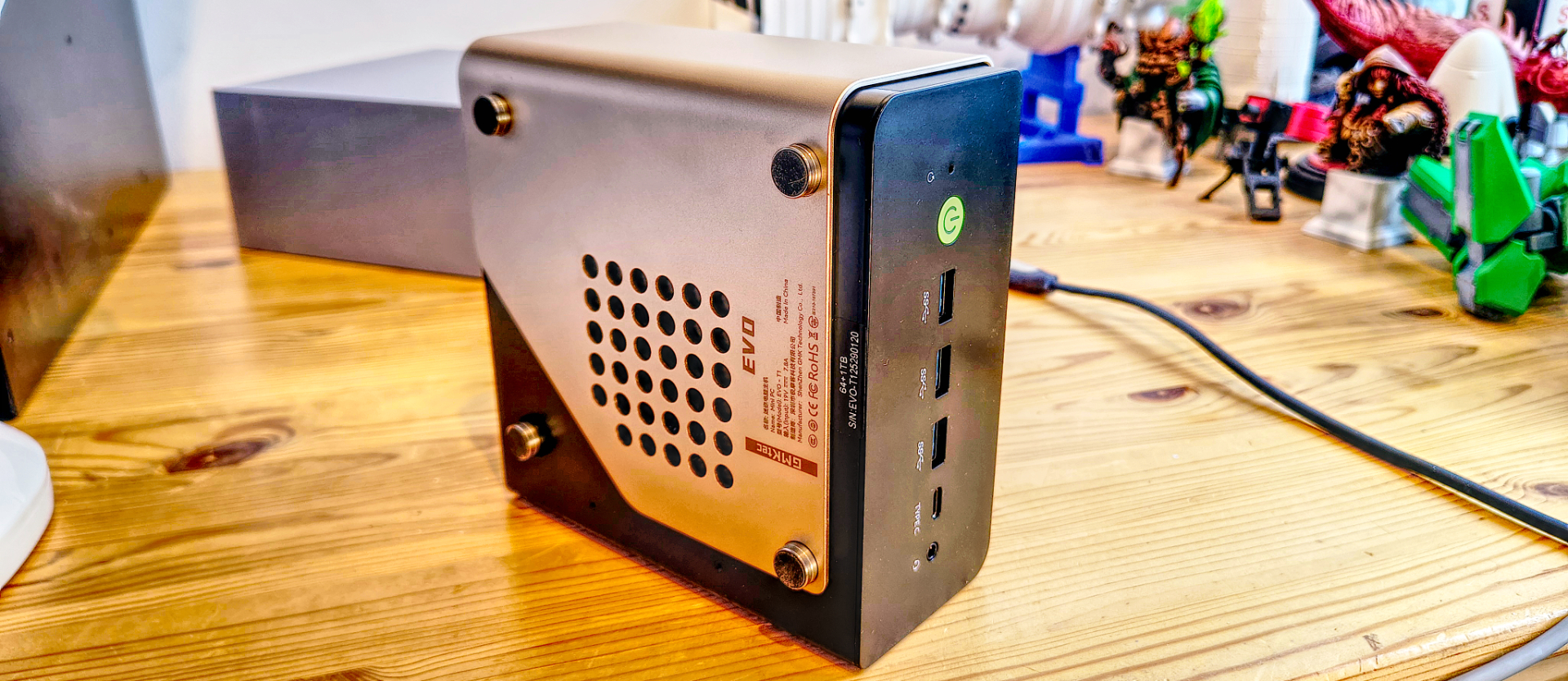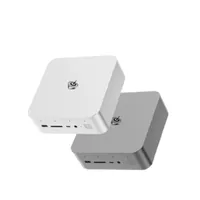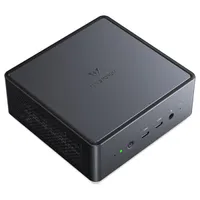TechRadar Verdict
Beautifully made and designed, the only thing holding back the EVO-T1 is a processor meant for laptops. But if you want the latest Intel hardware, you can live with the black and gold scheme and the higher-than-normal price, then this is a classy piece of gear.
Pros
- +
Powerful 99 TOPS AI platform
- +
3x PCIe Gen 4 M.2 slots
- +
OCuLink and USB4
- +
Excellent build quality
Cons
- -
Not a cheap NUC
- -
The Intel CPU lacks GPU performance
- -
Access isn't easy
Why you can trust TechRadar
GMKtec EVO-T1: 30-second review
The GMKtec EVO-T1 is a compact yet potent mini PC built around Intel’s cutting-edge Core Ultra 9 285H processor. With 16 cores (six performance, eight efficiency, and two low-power, clocking up to 5.4GHz, it’s designed to handle demanding multitasking, AI workloads, and creative applications with ease. Paired with Intel’s Arc 140T GPU and a dedicated NPU, the EVO-T1 delivers up to 99 TOPS of AI acceleration — making it one of the most capable AI-ready mini PCs in its class.
Physically, the EVO-T1 maintains a palm-sized footprint (103 × 98 × 32 mm), yet it packs workstation-grade specs: up to 128GB of DDR5 RAM (64GB pre-installed in higher SKUs), triple PCIe Gen 4 M.2 slots supporting up to 12TB of storage, and a robust array of ports including USB4, OCuLink for external GPU support, dual 2.5GbE LAN, HDMI 2.1, DisplayPort 1.4, and quad-display output. Its dual-fan cooling system keeps thermals in check without excessive noise, and the configurable power profile (up to 150W) allows users to balance performance and efficiency.
While the barebone version offers flexibility for DIY builders, the 64GB RAM + 1TB SSD SKU provides the best value for most users, delivering plug-and-play convenience without compromising on speed or capacity. The lack of a pre-installed OS may be a minor hurdle for some, but it also gives professionals the freedom to deploy Linux, Windows, or custom environments as needed.
The EVO-T1 is best suited for developers, AI researchers, and creative professionals who need serious compute power in a small form factor. It’s ideal for running local LLMs, training models, compiling code, editing media, or managing virtual machines. Thanks to its upgradeability and connectivity, it also serves well as a compact workstation, edge server, or even a home lab node.
Gamers may find the integrated Arc GPU limiting for AAA titles, but with OCuLink support, external GPU pairing is a possibility. Overall, the EVO-T1 is a forward-looking machine that blends performance, flexibility, and portability — perfect for users who demand more than what traditional mini PCs can offer and want the best mini PC with Intel technology.
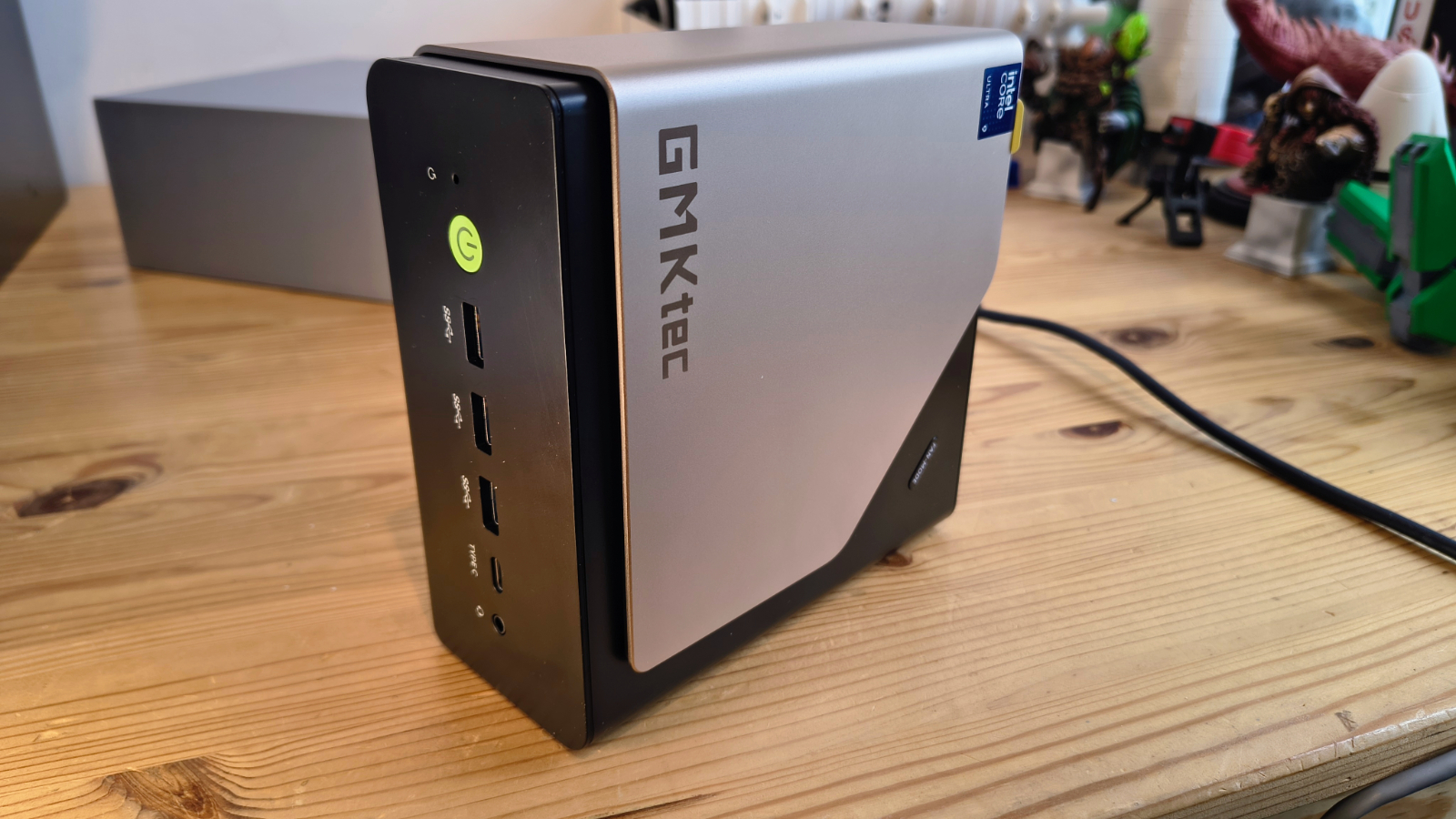
GMKtec EVO-T1: Price and availability
- How much does it cost? From $899
- When is it out? Available now
- Where can you get it? Direct from GMKtec or via online retailers like Amazon
This machine can be bought directly from GMKtec for only $899 for the barebones SKU by clicking here.
For those in the UK/EU, you'll want to head the the company's new European store by clicking here. The barebones is € 799.99, the 1TB is € 1099.99, and the 2TB is € 1199.99.
Sign up to the TechRadar Pro newsletter to get all the top news, opinion, features and guidance your business needs to succeed!
However, for a model with RAM, storage, and Windows 11 Pro pre-installed, the starting price is $999.99 for 64GB of RAM and 1TB of storage, with the option to upgrade to 2TB of storage for $1079.99.
I'm seeing plenty of different configurations over on Amazon in the US and UK. That includes the 1TB model on Amazon.com and Amazon.co.uk. Although the $1300 / £1201 price is a hefty increase for the joy of next-day delivery.
However, I'd advise avoiding Amazon.co.uk, as this is a US-sourced import and the seller is asking an eye-watering £2,465.11 for the top-end model. I'd recommend using GMKtec direct in this instance.
You can get a few dollars off by purchasing it via AliExpress, but not a huge discount.
Currently, there are three other mini PC designs utilising the same Ultra 9 285H platform. These include the Geekom IT15, the MinisForum M1 Pro and the Asus NUC 15 Pro+. The IT15 is roughly the same price, and the M1 Pro is only $695 for the barebones option.
The NUC 15 Pro+ is available in a wide range of SKUs with different Ultra processors, with models featuring the Ultra 9 starting from $1,469.99 on Amazon.com.
- Value: 3.5 / 5
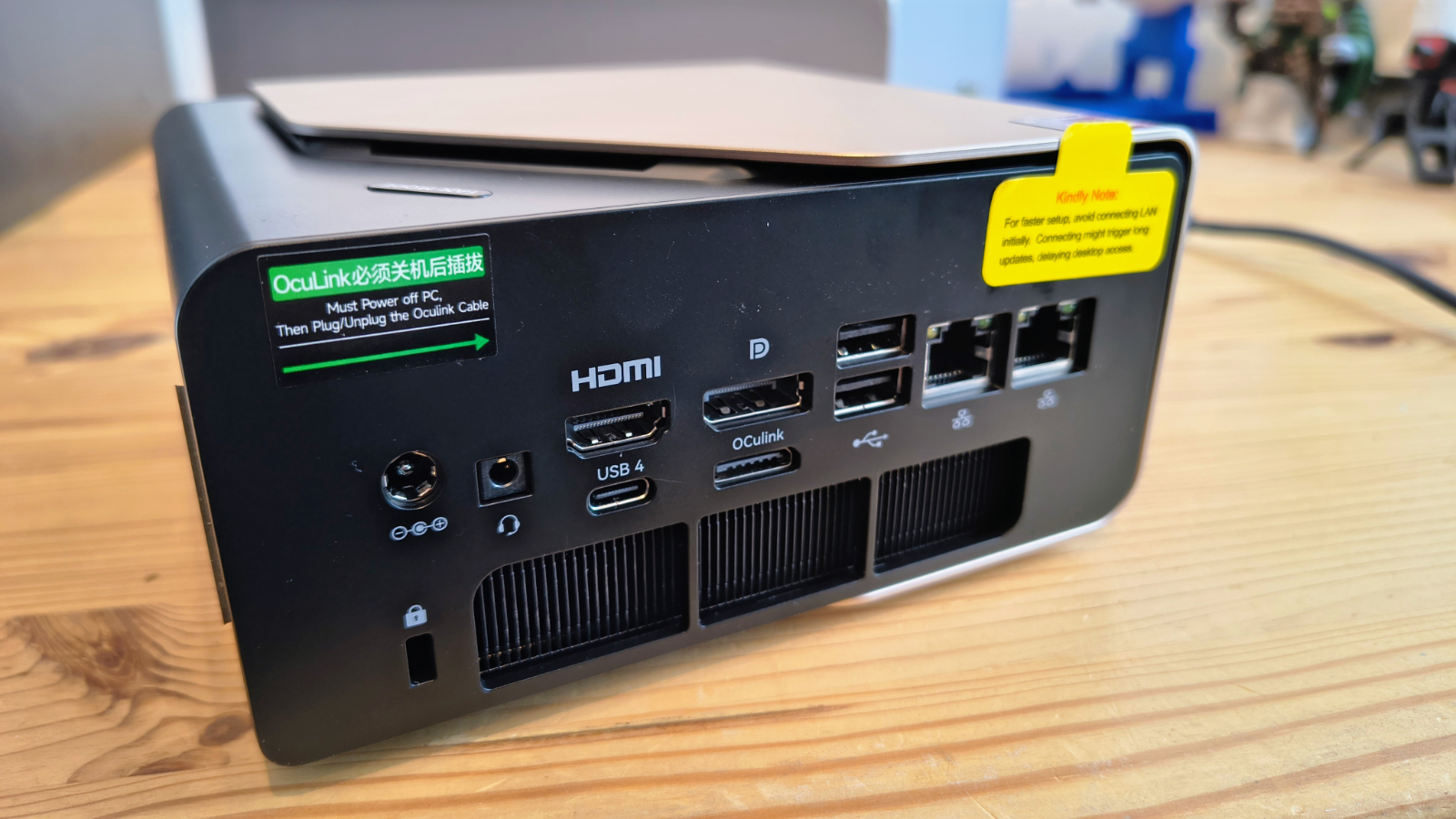
GMKtec EVO-T1: Specs
Item | Specification |
|---|---|
CPU | Intel Core Ultra 9 285H (16 cores: 6P + 8E + 2LP, up to 5.4GHz, 24MB L3 cache) |
GPU | Intel Arc 140T (8 Xe cores, up to 2.35GHz, 77 TOPS INT8) |
NPU | Intel AI Boost (13 TOPS INT8) |
RAM | 64GB DDR5-5600 (32GB × 2 SO-DIMM), expandable to 128GB (up to DDR5-6400) |
Storage | 1TB PCIe Gen 4 SSD (M.2 2280), expandable to 12TB via 3× PCIe Gen 4 M.2 slots |
Expansion | 3 × M.2 2280 PCIe Gen 4 ×4 slots |
Ports (Front) | 1 × USB-C (USB 3.2 Gen 2, PD/DP/Data) - 3 × USB-A (USB 3.2 Gen 2) - 1 × 3.5mm combo audio jack |
Ports (Rear) | 1 × HDMI 2.1 (8K@60Hz / 4K@144Hz) - 1 × DisplayPort 1.4 - 1 × USB4 - 1 × Type-C - 2 × USB 2.0 Type-A - 2 × 2.5GbE LAN - 1 × OCuLink (PCIe Gen 4 ×4) - 1 × 3.5mm combo audio jack |
Networking | Wi-Fi 6 (AX200), Bluetooth 5.2, Dual 2.5GbE LAN |
Display Output | Quad-display support via HDMI, DP, USB4, and Type-C |
OS | Barebone (no OS pre-installed) or optional Windows 11 Pro |
Power Supply | DC IN 19V 6.32A (120W) or 19V 7.89A (150W max) |
AI Performance | Up to 99 TOPS (INT8) combined CPU/GPU/NPU |
Dimensions | 154 x 151 s 73.6mm |
GMKtec EVO-T1: Design
- Metal construction
- Awkward access inside
- Triple M.2 2280
For whatever reason, probably because this is the eleventh mini PC from GMKtec I’ve reviewed, but I expected GMKtec to make the EVO-T1 entirely from plastic. Some of the case sections are, but there are also some metal case parts.
This gives the machine much more gravitas, as it equals or surpasses the construction quality that Intel had with its NUCs and that Asus offers today.
The slightly odd gold wrap on the top and left creates an attractive accent in gold to the main enclosure, which is a silk finish black. The machine is made to either lie flat or be vertically placed, and it comes with a VESA mounting plate for attaching it to a monitor.
Measuring 154 × 151 × 73.6 mm, this design is a bit bigger than a classic NUC, but not excessively large. Its brushed aluminium chassis feels premium and solid, with subtle venting along the sides and base to support its dual-fan cooling system.
One oddity is how the gold metal shroud connects to the rest of the EVO-T1, using three of the four feet that are threaded through to the underside of the case.
These feet need to be removed to get inside, and as they’re completely smooth, this isn’t easy. Once they are out, four small screws can be taken out to separate the case into two halves, with a large fan in one.
We’ve seen cases that are much easier to get inside than this, though once past the three feet and four screws, you have full access to the dual DDR5 memory slots and the three 2280 M.2 slots. One of the M.2 slots is occupied with the supplied storage, unless you opt for the barebones option.
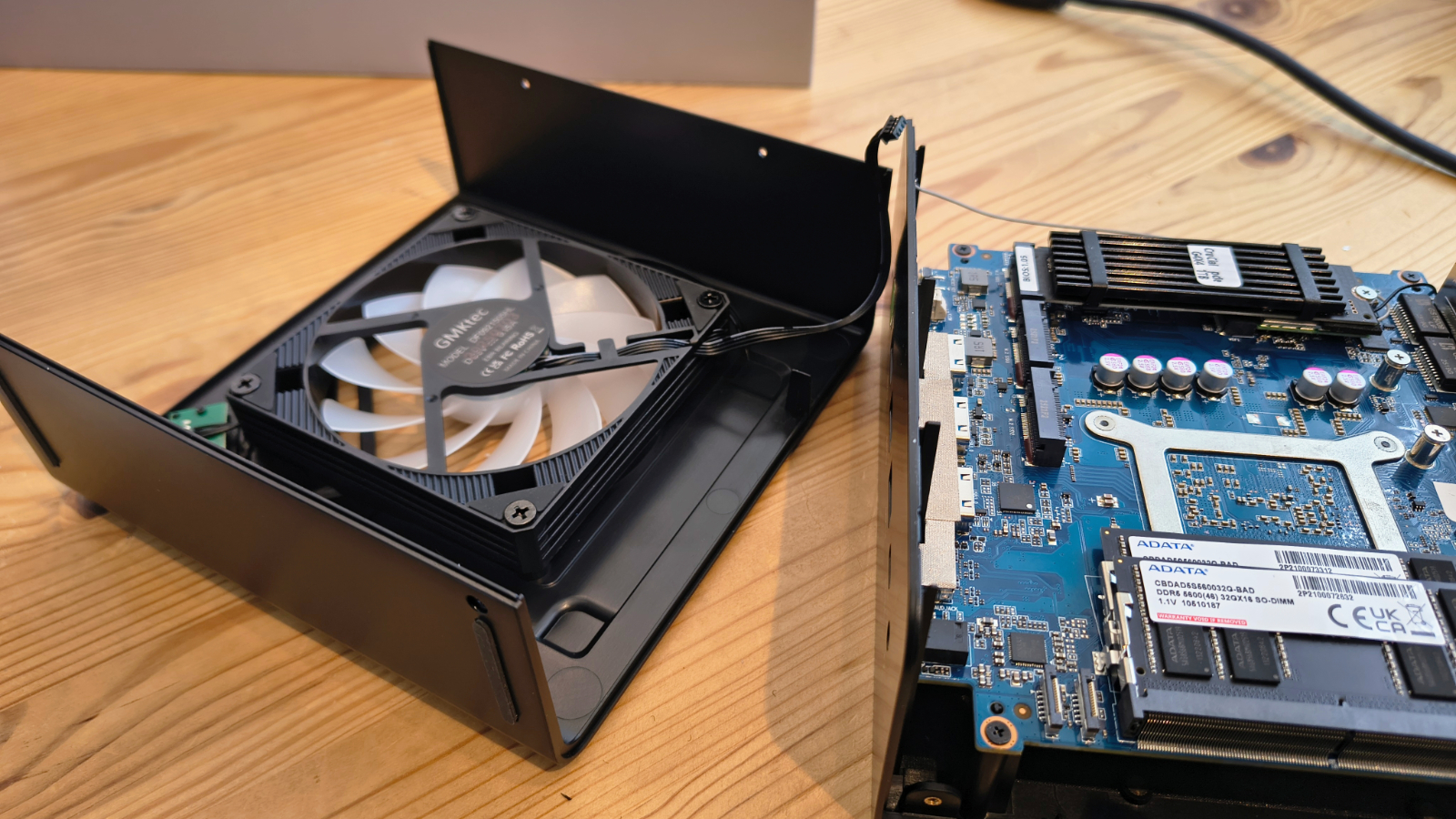
On the front panel, you’ll find three USB-A ports (USB 3.2 Gen 2), a USB-C port supporting data, DisplayPort, and Power Delivery, and a 3.5mm combo audio jack. These are ideal for quick access to peripherals like external drives, headphones, or input devices. The rear panel is where the EVO-T1 truly shines: it includes a USB4 port, another Type-C connector, two USB 2.0 ports, HDMI 2.1 (supporting up to 8K@60Hz or 4K@144Hz), DisplayPort 1.4, dual 2.5GbE LAN ports, and a second 3.5mm audio jack.
There’s also an OCuLink port, allowing users to connect an external GPU for serious graphical workloads or gaming. And, GMKtec already offers the AMD Radeon 7600M XT-- AD-GP1 External GPU Docking Station for those needing greater GPU performance.
The chassis is designed with modularity in mind. The top panel can be removed to access three M.2 PCIe Gen 4 slots, making upgrades straightforward. The system supports quad-display output, enabling creators to run multiple monitors for editing, coding, or trading setups. Cooling vents are strategically placed to optimise airflow without compromising the sleek silhouette.
Overall, the EVO-T1’s external design is both practical and forward-looking. It offers the kind of I/O and expandability usually reserved for much larger systems, all while maintaining a clean, understated look that fits into any workspace.
- Design: 4.5 / 5
GMKtec EVO-T1: Features
- Intel Core Ultra 9 285H (16 cores, 16 Threads)
- 28 PCIe Lanes
- Intel Arc 140T GPU
TThe Intel Core Ultra 200 series, particularly the Arrow Lake desktop CPUs, has drawn criticism from both enthusiasts and professionals for falling short of expectations. Marketed as a leap forward in AI acceleration, gaming performance, and energy efficiency, the series promised a flagship experience.
But early benchmarks and real-world usage revealed a different story. Many users found that chips like the Core Ultra 9 285K underperformed not only against AMD’s Ryzen 9000 series but even against Intel’s own previous-generation Raptor Lake CPUs.
What Intel got right was power efficiency, but to achieve this objective, chip designers sacrificed multi-thread performance, and none of these processors have hyperthreading.
This is a problem from a mini PC perspective, as power management isn’t the same issue the Intel Core Ultra 9 285H was designed to resolve, given there is no battery to manage.
The only advantage of having such a power-efficient chip inside a small PC is that it’s unlikely to overheat with even a modest cooling system.
That said, the Intel Core Ultra 9 285H features sixteen cores, allowing it to handle a decent number of tasks simultaneously, and it also has 28 PCIe lanes.
The lane breakdown is a single x8 Gen5 + three x4 Gen4 and eight Gen4(x1,x2,x4). That’s a huge amount of bandwidth, and in this context, it allows plenty for USB ports, M.2 slots and OCuLink.
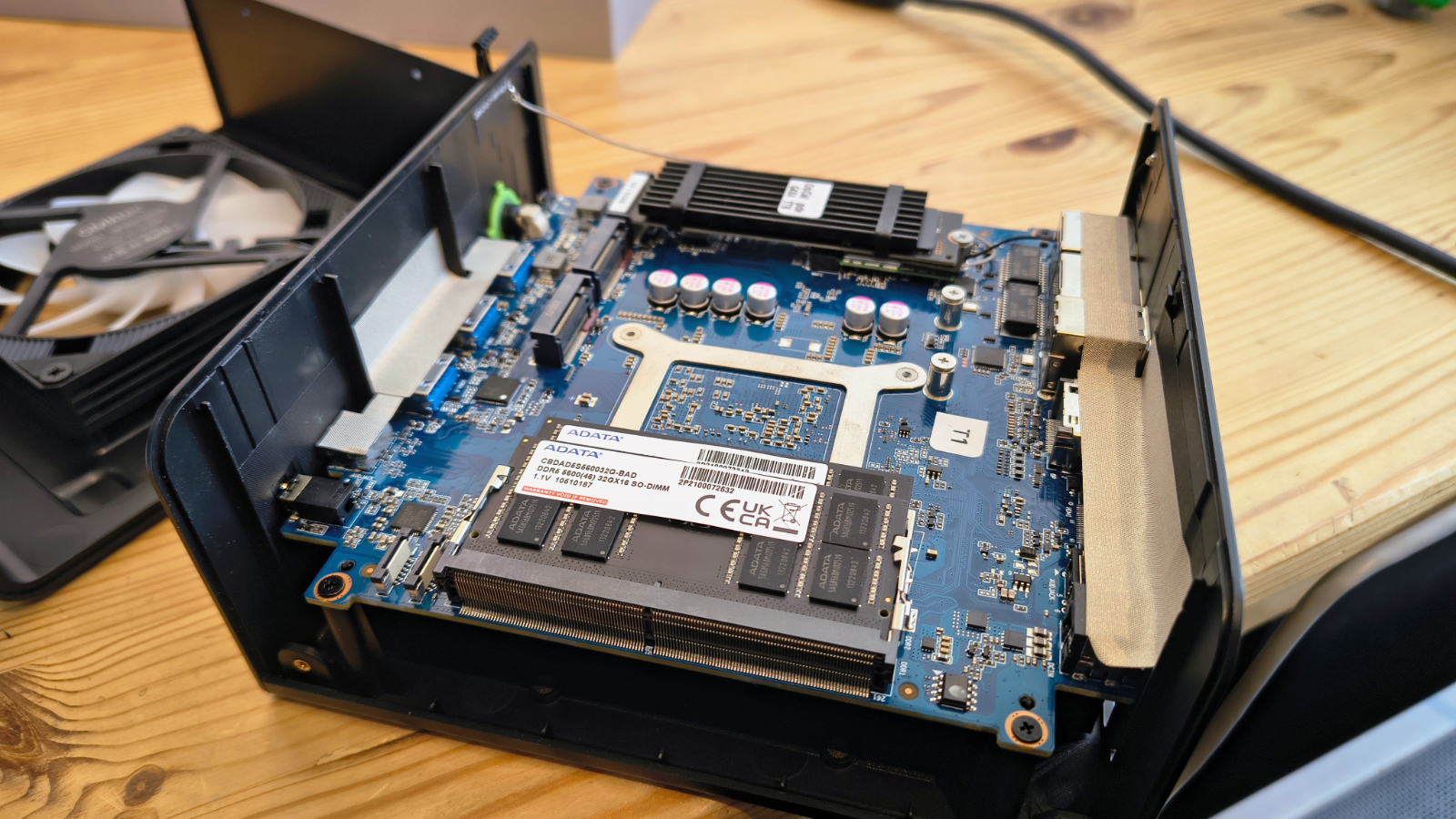
If this architecture has a weakness other than raw performance, it’s probably the Intel Arc 140T GPU. The Intel Arc 140T integrated GPU, featured in Arrow Lake mobile processors, has struggled to meet expectations, especially when compared to AMD’s latest integrated graphics.
A significant issue here is that Intel has developed the Lunar Lake 140V GPU, which utilises second-gen XeSS cores; however, the 140T relies on the older Xe+ architecture, which limits its efficiency and gaming capabilities.
With AMD now rolling out the Radeon 880M and 890M, these have a superior software stack and higher GPU frequencies that give them the practical advantage in many scenarios.
Intel has this odd notion that the same integrated GPU that is on the lowest 200 series processor is also fine for the highest, and for power users, the answer is to use OCuLink and attach a discrete GPU externally.
That’s an option, but that increases the overall cost of the system to a point where a desktop PC might have been a more affordable choice.
If you don’t need GPU performance, then the Intel Arc 140T GPU might not be a problem, but for those that want a more compelling experience, the latest AMD Ryzen designs and their GPUs look like a better choice.
- Features: 4 / 5
GMKtec EVO-T1: Performance
Mini PC | Header Cell - Column 1 | GMKtec EVO-T1 | Beelink GT Ultra (GTi12) |
|---|---|---|---|
CPU | Row 0 - Cell 1 | Intel Core Ultra 9 285H | Intel Core i9 12900H |
Cores/Threads | Row 1 - Cell 1 | 16C 16T | 14C 20T |
RAM | Row 2 - Cell 1 | 64GB LPDDR5 (2x32GB) | 32GB DDR5 (2x16GB) |
Storage | Row 3 - Cell 1 | Crucial P3 Plus 1TB | Crucial P3 Plus 1TB |
Graphics | Row 4 - Cell 1 | Intel Arc Graphics 140T | Intel Iris Xe Graphics (96EU) |
3DMark | WildLife | 24893 | 15261 |
| Row 6 - Cell 0 | FireStrike | 8213 | 5821 |
| Row 7 - Cell 0 | TimeSpy | 4363 | 2028 |
| Row 8 - Cell 0 | Nomad Lite | 3436 | 1375 |
CineBench24 | Single | 129 | 109 |
| Row 10 - Cell 0 | Multi | 1141 | 705 |
| Row 11 - Cell 0 | Ratio | 8.82 | 6.48 |
GeekBench 6 | Single | 2973 | 2531 |
| Row 13 - Cell 0 | Multi | 16097 | 10757 |
| Row 14 - Cell 0 | OpenCL | 41700 | 16645 |
| Row 15 - Cell 0 | Vulkan | 38605 | 20439 |
CrystalDisk | Read MB/s | 5198 | 5218 |
| Row 17 - Cell 0 | Write MB/s | 4726 | 4751 |
PCMark 10 | Office | 7917 | 6067 |
WEI | Row 19 - Cell 1 | 8.4 | 8.4 |
My performance assessment is one of those good cop, bad cop deals, so we’ll start with the positive parts of this muddled equation.
To put it bluntly, this is the fastest Intel mini PC I’ve ever tested. In most tests, it outperforms every machine that uses a Core Ultra 100 series processor, and it also smoked classic Core i9 12900H machines. I’ve used one of these as the comparison machine, the Beelink GT Ultra, now rebranded the GTi12.
Any test that’s graphical, the Arc 140T is better than the Intel Iris Xe Graphics. The Iris X2 uses the Gen12 Xe architecture and has 96 execution units, whereas the Arc 140T is a Xe-LPG design that has 1024 shaders, equivalent to more than 128 execution units.
In theory, the 140T should be twice the speed of the Iris Xe, and in a few tests, it manages to achieve close to that. Also being built on a TSMC 5nm node, the 140T offers far better power efficiency and thermal management than the 10nm SuperFin construction that the Iris Xe is saddled with.
So this all looks good, surely?
There are two issues, one that is revealed by the PCMark10 bench data. The Beelink GT Ultra is roughly 75% of the performance of the EVO-T1, but it was also only about 75% of the cost when it was first launched. It can now be bought directly from Beelink with 32GB of RAM and 1TB of storage for $579, making it an even better deal. You get performance, but at a price.
What I can’t offer here is any data on the latest AMD platforms to present, but hopefully, we’ll see those soon. But my gut feeling is that the new Ryzen AI 9 HX 370 platforms will either match or be quicker than the Core Ultra 9 285H, mostly because they have a GPU that is rated at 8.6 TFLOPS, whereas the Intel silicon is 4.8 TFLOPS.
The only area where the Intel platform is likely to outperform convincingly is its AI Acceleration, which reaches 99 TOPS, compared to the AMD chip’s 50 TOPS.
We’ll be introducing some AI benchmarking shortly and exploring that in upcoming reviews.
Overall, I'm not a fan of the 200 series, but this is as good as that line gets for the mobile chips.
- Performance: 4.5 / 5

GMKtec EVO-T1: Final verdict
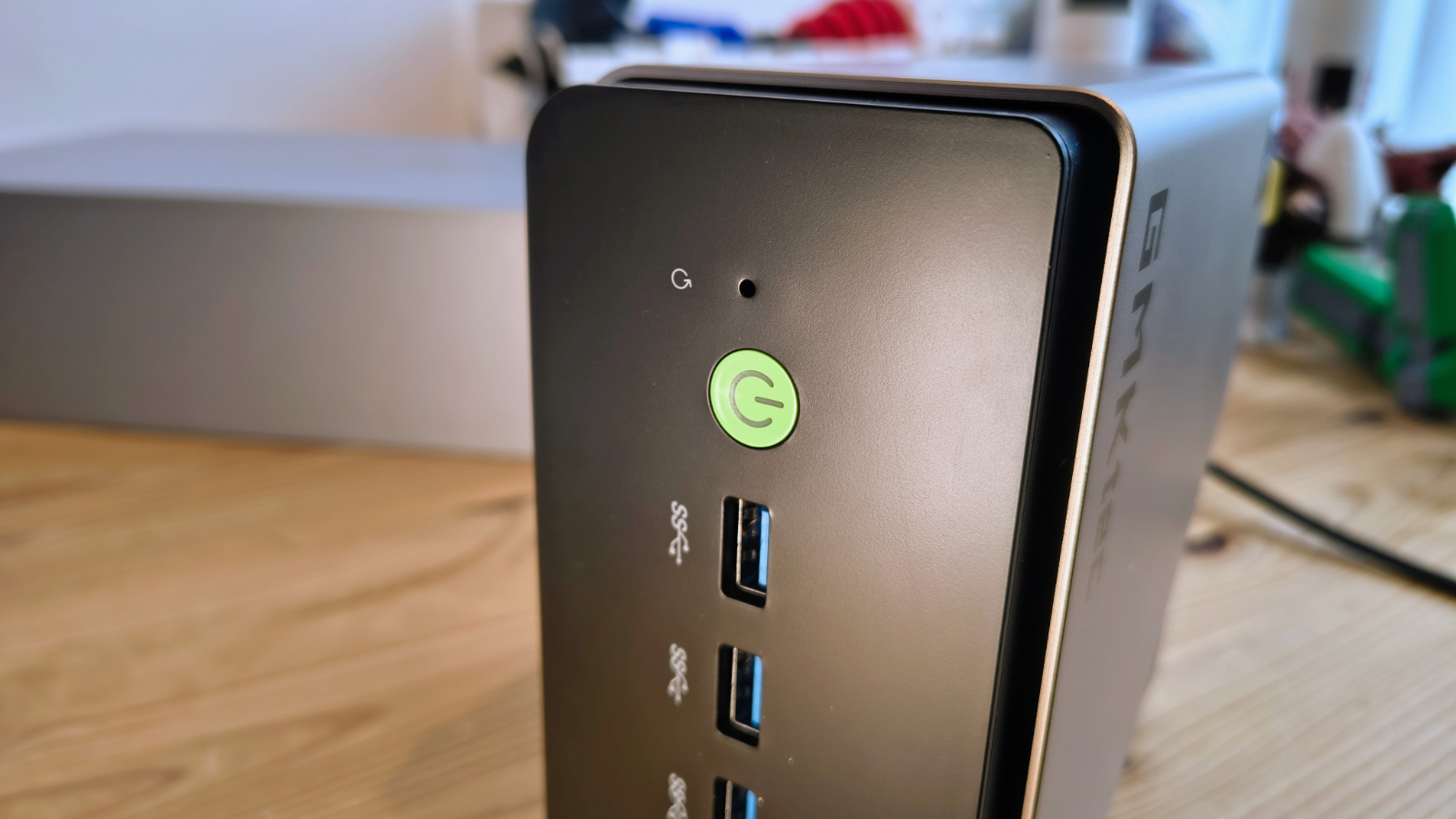
It’s hard to be critical of this design or specification, even if Intel appears to have lost the plot in the past couple of years with its processor designs.
The EVO-T1 is an exceptionally punchy platform that can take plenty of RAM and storage, making it a flexible solution that should cope with most tasks.
If you need even more GPU power, the inclusion of an OCuLink port could enable a discrete graphics card to deliver that. However, it can never match the performance levels of a system that connects an external GPU via PCIe directly.
My concern is that this is an expensive device that further blurs the lines between the cost of desktop systems and mini platforms. If this were $100 cheaper, I might be less focused on how this might be pricing itself out of some budgets, it’s that fine a margin.
But on the plus side, this is the best-engineered mini system that GMKtec has made so far, and I can’t wait to compare it to the same brand's AMD-powered EVO-X1.
Should you buy a GMKtec EVO-T1?
Value | Not a cheap system, but well made | 4.5 / 5 |
Design | Looks great if not the easiest NUC to open | 4 / 5 |
Features | Powerful CPU and three M.2 slots | 4 / 5 |
Performance | Fastest Intel mini system so far | 4.5 / 5 |
Overall | Great performance but hardly great value | 4 / 5 |
Buy it if...
You want a powerful NUC
If you like Intel platforms and small form factors, then the EVO-T1 is the perfect option. This is the most powerful current Intel mobile platform, and this gives this little machine unprecedented flexibility.
You perform upgrades
Getting into this NUC is a little convoluted but not impossible, and once inside, memory and storage slots are available to increase the RAM and drives. If you can afford it, you can put 128GB of DDR5 and 12TB of SSD capacity in this machine.
Don't buy it if...
You only want it for light tasks
There is little point in spending this much money on a system if it’s only going to be used for web applications or light office tasks. There are many more cost-effective options.
You need a discrete GPU
While an OCuLink port is included with the EVO-T1, you will need an external OCuLink box and a power supply to run the external video card. Better choices would be either a machine like the Beelink GT Ultra (GTi12) that has a PCIe slot and cradle, or a desktop system with room for a video card. The same video card connected by PCIe will perform better than one connected by OCuLink.
Also Consider
Beelink GTi12 Ultra Mini PC
This machine uses a 12th Gen Intel processor, but Beelink has added 13th and 14th Gen models to this series that all work with its Multi-Functional EX Pro Docking Station. This enables a PCIe 5.0 video card to connect directly to these machines for the best possible GPU performance (based on the card used). The Beelink GTi12 Ultra and the dock can be bought as a bundle for under $700, currently.
Check out our Beelink GTi12 Ultra Mini PC review
Minisforum UM790 Pro
A powerful AMD system using a Ryzen 9-class processor and the Radeon 780M GPU. Targeted towards creatives and gamers, the expandable memory and dual M.2 PCIe 4.0 SSDs allow you to boost performance according to your requirements, with the standard version already delivering remarkable capabilities.
Check out our Minisforum UM790 Pro review
For more professional hardware, we've reviewed the best business computers and the best business laptops for working on the go.
Mark is an expert on 3D printers, drones and phones. He also covers storage, including SSDs, NAS drives and portable hard drives. He started writing in 1986 and has contributed to MicroMart, PC Format, 3D World, among others.
You must confirm your public display name before commenting
Please logout and then login again, you will then be prompted to enter your display name.
